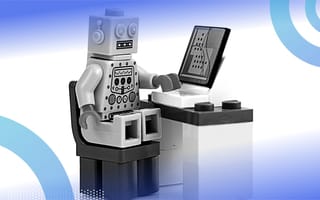AI dominates business and tech conversations. Everyday consumers use it to write and generate images. It even fully cooks burgers in less than a minute. Conversations among businesses that were once “if we use AI” have quickly shifted to “when we use AI.”
Top Tips for Businesses to Make the Most of AI
- AI runs on data, so make sure your company’s data is accurate and well-connected.
- Employees care about their jobs, so be transparent with employees about how your business will use AI.
- Debunk any myths your employess might harbor about AI.
- Don’t feel the need to jump in feet first with AI. Take small steps to yield big results.
Like any new technology, integrating AI into your business is not something that happens overnight. There’s the reskilling and upskilling of employees so they can properly use AI-enabled tools and there’s onboarding of the tools themselves. Perhaps most important is the education that needs to happen organization-wide around AI. Even though AI has gone mainstream, people still panic when they hear about it or learn that it’s going to be part of their organization.
An AI-powered future is already here. To be a part of it, businesses must first make sure their employees and overall operations are ready. Here are three ways businesses can prepare their organizations for AI.
Centralize Your Company’s Data
Without data there is no AI. And because data is at the foundation of every AI-enabled technology to continually learn and make decisions, it needs to be well-connected and completely accurate.
At many organizations, data is spread across multiple channels and tools. Many times, it’s completely inaccessible for the majority of team members because it’s held by gatekeepers or they don’t know where the data lives. This results in many interpretations of the data, if employees can get their hands on it at all–there’s not one single source of truth for data for AI to draw from.
Companies need to connect these disparate data sources and bring together the metrics that track performance, process, people and profitability – across departments, platforms and channels – all in one place. Once data is centralized in this manner, employees across the organization will have one space to access data that will support any and every kind of AI.
Beyond that–having all of an organization’s data in one place drives productivity. Seventy-two percent of employees say that to reach maximum productivity, they need all the data and resources necessary to do their job readily available, according to Slingshot’s 2023 Digital Workplace Trends report.
Debunk Myths About AI in the Workplace
Many people still harbor uneasiness toward AI, especially when it comes to their jobs. Given how AI is often portrayed in the media and entertainment, the general public is quick to assume that any kind of AI is immediately out to steal their jobs. The truth is quite the opposite: AI can prove to be extremely helpful in their roles.
For example, AI can help cut out the mundane, manual tasks that employees do every day and give them time back to focus on the more creative or strategic tasks that only they can do. Share specific examples like this with employees so they can focus on how AI will uplevel their roles rather than make those roles disappear completely.
And in the same way that organizations should share business goals organization wide to keep everyone aligned and motivated, a transparent look into how AI will be used will give employees context into where the technology fits into the organization, and their role. This transparency will shift the narrative away from AI, “the machine that’s taking jobs” to AI, “an everyday workplace tool.”
Take Small Steps to Win Big
With so much new technology and emerging innovations, it’s enticing to go all in on AI. But it’s not sustainable to go from zero to 100 overnight.
Instead, start with small integrations within the business, for instance using AI to summarize internal meetings or translate content into different languages.
By slowly introducing these small but significant AI use cases, employees will become aware of the technology’s specific role in the workplace. This also allows room for employees to gain skills to work with these technologies so they can start to onboard them quicker as well.
AI is here to stay and it’s already transforming how we work and do business.
Beyond getting employees onboard, start small with the technology itself. Because AI is so new and continues to evolve, be sure to test different tools and use cases within your organization. Start small with specific departments to make sure AI is driving the success it’s supposed to. Once it is, you can implement it across the entire organization.
AI is here to stay and is already transforming how we work and do business. It’s up to organizations to prepare their employees and operations for AI’s effect on the workplace.





